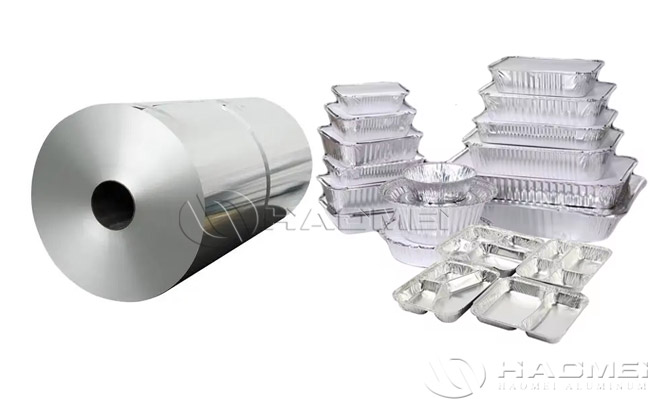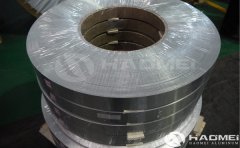-
- News Center
- Related News
-
- Lubricated Aluminum Foil For Container Making
Lubricated aluminum foil for containers is a specially designed aluminum foil material commonly used in food packaging and container production. This kind of aluminium foil undergoes a special treatment, with a surface coating of lubricant to enhance its processing performance and safety.
Main Alloy Materials of Lubricated Aluminum Foil For Container Making:
- 3004 aluminum foil:
Stronger than 3003 aluminum alloy, it offers excellent load-bearing properties and is suitable for food containers requiring high pressure resistance, such as airline lunch boxes. Its recycled aluminum products, made from recycled can stock, meet low-carbon and environmental requirements, while offering a better balance of strength and price than 8011 aluminum alloy.
- 8011 aluminum foil:
Features high elongation and excellent formability, making it commonly used for custom-shaped containers, such as round dessert cups. While oil-coated, it offers stable stamping performance, but its deformation resistance is slightly inferior to that of 3004 aluminum alloy.
- 3003 aluminum foil:
While lower in cost, it offers lower strength and corrosion resistance, making it primarily used for applications requiring less demanding loads, such as disposable barbecue trays.
Specification of Lubricated Aluminium Foil For Container:
Aluminum foil for containers typically has a thickness between 0.018 and 0.2 mm, and widths range from 100 to 1700 mm. For example, 0.02 mm thick aluminum foil is suitable for lightweight takeout containers, while 0.08 mm thick foil is used for baking molds requiring greater strength.
Oil lubricated aluminum foil is coated with a specialized lubricant to create a uniform oil film. This oil film reduces friction between the mold and the foil during the stamping process, preventing scratches, deformation, or breakage on the foil surface, thereby ensuring container quality. For example, 3003 H24 oil lubricated aluminum foil uses a double-sided oiling process, achieving an oil coating tolerance of within ±10%, significantly improving product quality. Food-grade lubricants must meet characteristics such as low viscosity, low aromatic content, and be non-toxic and odorless to ensure food contact safety. Some high-end products use isopropyl alcohol volatilization technology to reduce the amount of oil applied, but this technology's flammability, explosiveness, and odor generation at high temperatures must be addressed.
Typical Applications of Lubricated Aluminum Foil For Container Making:
- Food and Takeout
Lubricated aluminum foil containers (such as 300ml disposable airline lunch boxes) have become a mainstream packaging option in the takeout industry due to their excellent sealing, light-blocking properties, and heat and aroma retention. Their infinite recyclability means the recycling process consumes only 5% of the energy used in primary aluminum production, complying with national energy conservation and emission reduction policies.
- Baking and Grilling
Thickly coated aluminum foil (such as 18-meter rolls) can withstand temperatures of 260°C and is suitable for use in ovens, air fryers, and other appliances. Its inert surface coating prevents food from sticking and eliminates the risk of leakage after heating, significantly improving the user experience. For example, a certain brand of aluminum foil container, when used as a grill mat during camping, reduces grease dripping by 90% and cuts cleanup time by 70%.
- Cold Chain Food Packaging
Oil-coated aluminum foil combined with LDPE composite materials creates high-barrier packaging, effectively extending the shelf life of cold chain foods. For example, one company's aluminum foil composite roll film can extend the shelf life of frozen foods to 12 months and reduce the loss rate to less than 0.5%.
Oil lubricated aluminum foil for container making, due to its excellent overall performance and stringent safety standards, has become a core material in food container manufacturing.
- Haomei aluminum
- haomei Aluminium Plate





